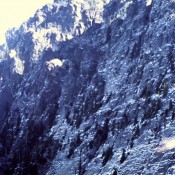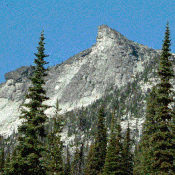
The Saint Joe Mountains are discussed on Pages 56-58 of the book. The Saint Joe Mountains form a high ridge line that runs 45 miles east-to-west between the Saint Joe and Coeur d’Alene Rivers. The range reaches its highest and most rugged heights northeast of Saint Maries, on a ridge anchored by Reeds Baldy and Latour Peak, the latter mountain … Continue reading




